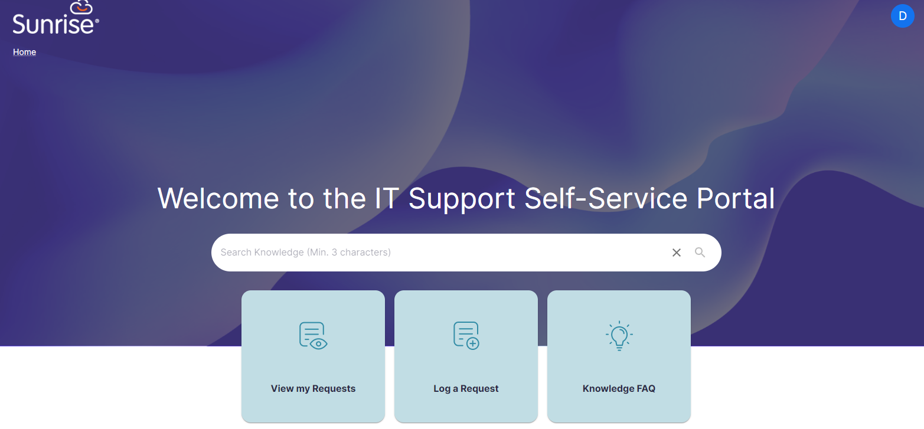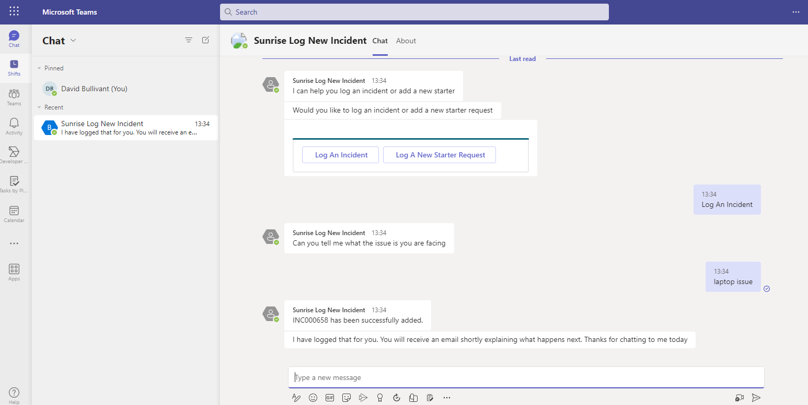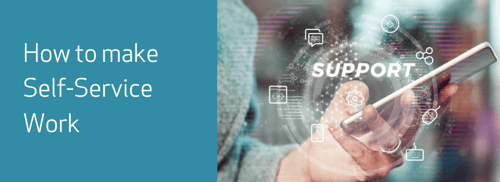For many organisations, how to make self-service work has been on the agenda for years. And that’s hardly surprising. The benefits are supposed to be huge, ranging from cost savings to higher user satisfaction. But if you’ve ever tried to implement ITSM self-service, you’ll know it’s far from easy. ...
Blog
,
IT Service Management
Maximising Your Use of Technology in the Hybrid Work Era
20 Jun 2023
David Bullivant – Sunrise Software Director of Sales and ITSM Thought Leader
With 17 years of experience at Sunrise, David Bullivant is Director of Sales in the IT Service Management (ITSM) field. Known for his astute business acumen and unwavering commitment to customer satisfaction, David has driven growth and forged strategic partnerships throughout his tenure. As a sought-after thought leader, he shares his expertise at industry conferences, webinars and published articles on emerging trends and best practices.
Embracing the Benefits of Hybrid Work Models
As the world embraces the benefits of hybrid work models, the IT sector in the UK has witnessed a shift in work preferences.
- 86% of professionals opting for hybrid or remote jobs.
- Over 21% of organisations feel they are not utilising hybrid working well.
This blog post explores the advantages of IT Service Management (ITSM) tools and how they can be leveraged to enhance current processes, catering to the evolving work preferences of IT professionals.
Expanding Self-Service Capabilities:
One key area where organisations can significantly improve their operations is by expanding and enhancing their use of self-service options. By implementing robust self-service portals, companies have the opportunity to provide round-the-clock support to end users, regardless of their location—be it the office, home, or even while on the move. This level of accessibility empowers end users to independently find solutions to their queries or issues, or alternatively, seek assistance whenever they require it.
The benefits of implementing self-service options are manifold. Firstly, enhanced accessibility ensures that end users can access support and information whenever they need it, without being limited by the availability of support staff during specific working hours. This level of convenience and flexibility contributes to a seamless user experience, ultimately leading to increased end-user satisfaction.
Additionally, self-service options encourage users to actively engage with the knowledge base and resources available within the organisation. By empowering them to find solutions independently, users become more self-reliant and develop a deeper understanding of the systems and processes in place. This self-empowerment not only benefits the end users but also contributes to a more knowledgeable and skilled workforce overall.

Enhancing Efficiency and Simplifying IT Support for Hybrid Work
In a world where a mobile workforce is becoming increasingly prevalent, it is crucial for IT and business applications to work seamlessly together. By ensuring integration between communication applications and ITSM tools, organisations can eliminate duplicative work and save countless hours for their teams. Additionally, this integration provides hybrid workers with a one-stop shop for IT support, simplifying their experience and streamlining operations across the board.
Moreover, the integration of communication applications with ITSM tools enables better visibility and tracking of support requests and incidents. It allows IT teams to have a comprehensive overview of user issues, facilitating prioritisation, resource allocation, and proactive management of IT service delivery. With real-time monitoring and centralised data, organisations gain valuable insights to identify trends, recurring problems, and areas for improvement. This data-driven approach enables informed decision-making, helps identify opportunities for automation or process optimisation, and ultimately enhances the overall efficiency and effectiveness of IT support operations.
Additionally, it ensures that all stakeholders, including end users, IT teams, and business units, have access to the same information and updates regarding support requests. This transparency fosters trust, improves collaboration, and reduces miscommunication or confusion. By providing a unified communication platform, organisations can streamline their support workflows, enhance cross-team coordination, and deliver a seamless support experience that ultimately contributes to higher customer satisfaction and improved operational outcomes.

Harnessing AI in ITSM: Unlocking Efficiency and Innovation for Hybrid Work Environments
Artificial Intelligence (AI) is rapidly transforming the way businesses operate, and harnessing it within ITSM tools can yield significant benefits. Automating routine tasks, generating response replies to queries, and providing suggested answers and solutions can greatly enhance the hybrid work environment. By leveraging the power of AI, IT teams can assist and augment their capabilities, reducing response times, and elevating overall efficiency.
AI-powered automation plays a pivotal role in streamlining IT operations. It enables professionals to focus on more strategic initiatives by handling repetitive tasks such as ticket categorisation, routing, and prioritisation. This automation significantly reduces manual effort and response times, empowering IT teams to allocate their time and expertise towards resolving complex and critical issues. As a result, efficiency and productivity are improved, enabling organisations to optimise their IT resources effectively.
AI brings intelligence to support interactions. By leveraging natural language processing (NLP) algorithms, AI systems can comprehend and interpret user queries, delivering prompt and accurate responses. This capability accelerates response times and enhances the end-user experience by providing timely and relevant assistance. Additionally, AI systems can analyse historical data, knowledge bases, and past resolutions to suggest potential solutions for new issues. By harnessing AI-powered suggestions, IT teams can expedite problem resolution, optimise decision-making, and elevate the overall efficiency of IT support processes.
In Summary: ITSM for Hybrid Work: Benefits and Adaptation
With the rise of flexible hybrid work models, organisations must adapt to meet the changing needs and preferences of their workforce. By embracing ITSM tools, businesses can unlock a plethora of benefits, including access to a wider talent pool, increased employee satisfaction, longer-term employment prospects, and cost savings.
The ability to adapt and evolve existing systems and self-service portals to support end users from anywhere in the world is crucial. Moreover, synchronising communication applications with service management tools not only saves time and reduces administrative work but also provides a seamless experience for hybrid workers. Lastly, leveraging AI and machine learning further accelerates processes, helping IT teams and the wider business work smarter, not harder.
In this ever-evolving landscape, organisations that embrace ITSM tools and optimise their processes for hybrid work will position themselves at the forefront, empowering their workforce and achieving optimal efficiency, looking to see how you can adapt to the hybrid demand?
Related Posts
Blog
,Service Providers
,IT Service Management
Welcome to a new series of blogs that I am delighted to be delivering for Sunrise. The focus of these blogs will be around the value of IT Services, particularly in relation to the various ways in which these are sourced and managed. So this will apply to buyers, sellers, and practitioners of suppor...
.png)



